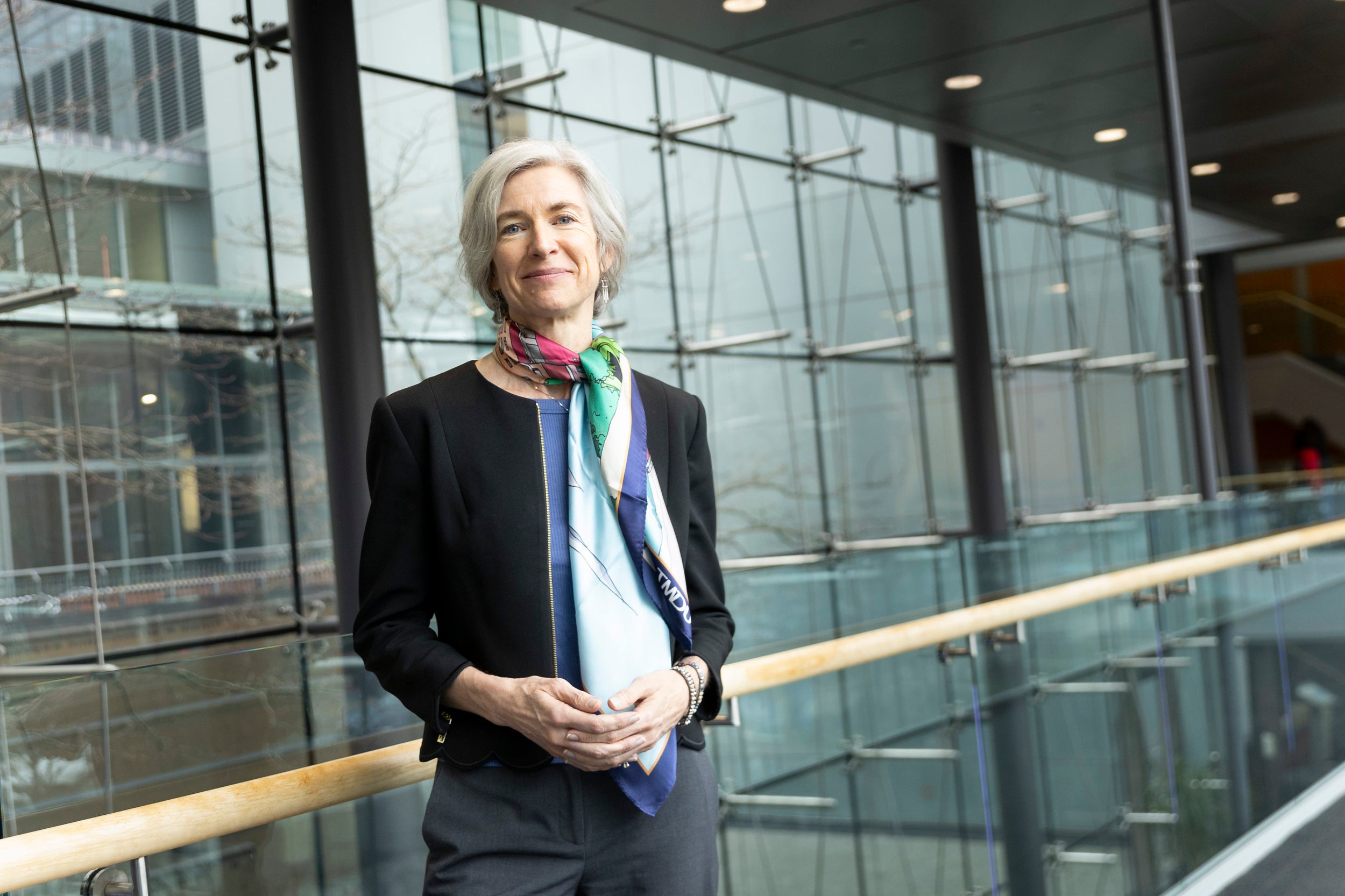The world stands on the edge of an era when gene editing can address many serious ills plaguing humankind, according to a pioneer of the revolutionary gene editing technique known as CRISPR-Cas9. But first, she said, there is a problem to solve.
Jennifer Doudna, whose work on CRISPR earned her the 2020 Nobel Prize in chemistry, applauded the recent approval of a CRISPR-based gene-editing therapy to help those struggling with sickle-cell disease. The therapy, developed by Boston-based Vertex Pharmaceuticals and CRISPR Therapeutics, was approved by the FDA in 2023. Preapproval studies showed it was very effective at reducing the severe pain that accompanies the life-threatening blood disorder.
Doudna, who visited Harvard Medical School last week to deliver the century-old Dunham Lectures, said the advance shows how CRISPR-based therapies can address hard-to-treat ailments, but it also highlights the hurdles that still stand in the way of widespread use. The therapy, she said, uses a process similar to that of a bone-marrow transplant. Blood stem cells are extracted from a patient’s bone marrow, genetically engineered, and then reinfused into the marrow to produce blood cells that greatly reduce disease symptoms and dangerous complications.
That process, while groundbreaking, is physically challenging for patients, and expensive, with each treatment costing more than $1 million. Together, those factors explain why only 250 people have received the therapy so far, Doudna said, even though the condition afflicts 90,000 to 100,000 in the U.S. and millions worldwide.
“It’s exciting, but that’s quite a small number,” Doudna said.
Doudna delivered her talk, “Rewriting the Future of Health Care with Genome Editing,” on Thursday in a packed Joseph B. Martin Amphitheater on HMS’ Longwood Campus in Boston.
She said that if CRISPR is to match its promise to reduce human suffering, new delivery methods are essential. She described several efforts underway in her lab and those of colleagues to create nanoparticle delivery systems that could, if perfected, relatively simply and cheaply deliver the CRISPR-based gene editor to target cells in various tissues.
That would allow the gene-editing process to occur inside the patient’s body rather than in the lab, as occurs with the new sickle-cell treatment. That would avoid the expensive and arduous process of extracting cells from a patient’s body, engineering them to address a condition’s genetic causes, and then reinjecting them into the patient.
“How we can achieve in vivo genome editing, I increasingly think this is the bottleneck in this field,” Doudna said. “Broadly speaking, what we need to be addressing is how these editors are going to get into target cells in the body. It’s a really interesting, really big challenge, and there’s many people working on it.”
The discovery of CRISPR/Cas9 in 2012 stemmed from basic scientific research into how bacteria fight off viruses. Researchers realized that a portion of the bacterial immune system contains molecules that precisely snip DNA at specific locations, and developed that into the molecular scissors of CRISPR/Cas9 that allow the precise editing of human, plant, and animal DNA at specific locations.
The technique was immediately seen as a major advance and other scientists began using it in their own research.
“Her groundbreaking development of CRISPR/Cas9 genome editing technology, with collaborator Emmanuelle Charpentier, earned the two of them the Nobel Prize in chemistry in 2020 and forever changed the course of human, animal, and agricultural research,” said Stephen Blacklow, chair of the HMS Department of Biological Chemistry and Molecular Pharmacology, who introduced Doudna. He added that Doudna has an “unsurpassed capacity to engage and inspire the next generation.”
Doudna, who received her Ph.D. from HMS’ Biological Chemistry and Molecular Pharmacology Department in 1989 under Nobel laureate Jack Szostak, expressed confidence that the problem of delivering gene-editing therapy directly to patients’ cells is a solvable one. Her talk dealt with strategies to tackle the problem including lentiviruses, lipid nanoparticles, and something called EDV — enveloped delivery vehicles.
“It makes me think that ultimately … we can come up with a strategy for a particle that will be both easy to make, easy to program, and be effective at delivering in vivo,” Doudna said.
Source link

